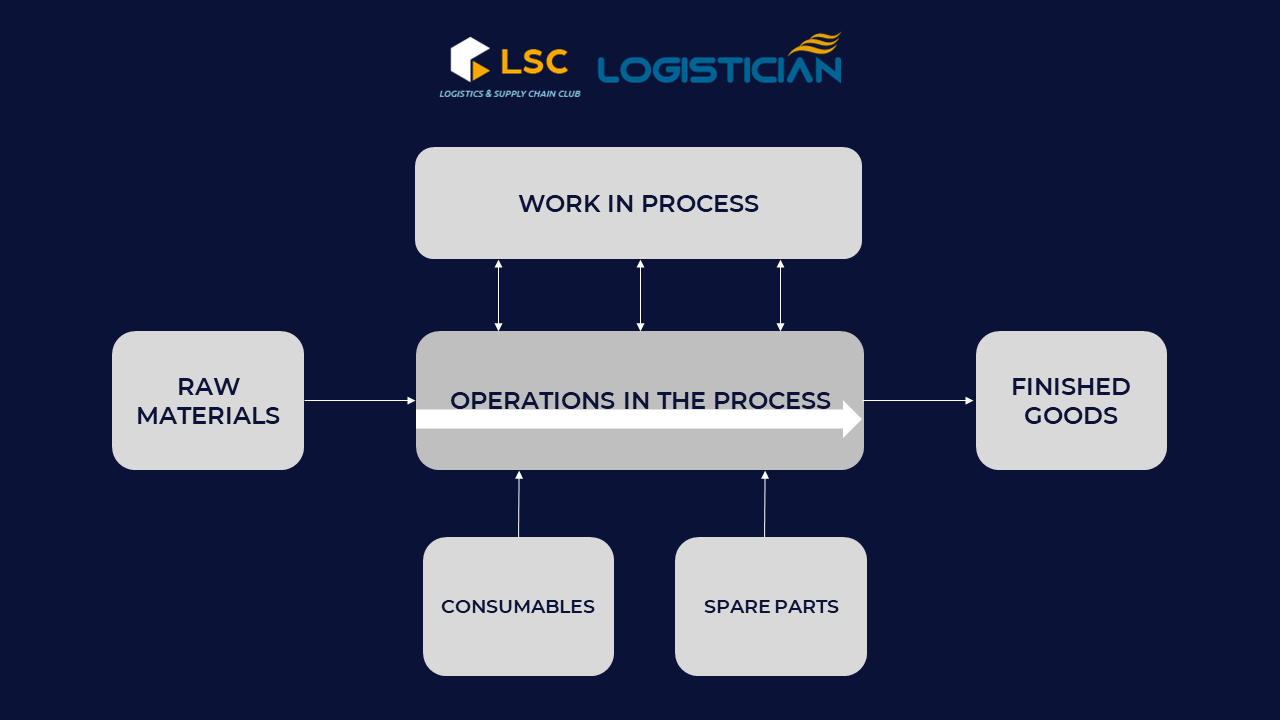HIGHLIGHTS
- Inventory is the materials and goods that the organization stores so that they can be used or for sale when needed.
- There are 5 types of inventory mentioned: raw material, Work-In-Process (WIP), Finished Goods, Spare parts inventory or Maintenance and repairs (MRO) inventory and Consumables.
- Examples for these kinds of inventory can be clearly observed in a textile manufacturer.
FULL ARTICLE
Definition: “Inventory is the materials and goods that the organization stores so that they can be used or for sale when needed”
People may be mistaken that inventory is items that can be consumed, but in reality, there are many types of inventory.

Raw material
These are raw materials from the enterprise’s suppliers and stored in stock to ensure that the production process is carried out continuously and smoothly.
Depending on the type of production and the final product of the business, the raw materials stored varies. For shoe manufacturing enterprises, raw materials can be leather, fabric or thread; for seafood processing enterprises, the raw materials can be fish and shrimp; or for a computer assembly company, the raw materials are semiconductors, wires; etc
The storage of raw materials supports the production process when managers make speculative purchases to prevent sudden price increases in the future or delayed response from suppliers.
Work-In-Process (WIP)
This is a partially finished product or product that is pending completion, usually being transformed from raw material to finished product within a certain period of time. WIP exists in virtually any manufacturing business.
WIP can be easily found in the computer industry, with Dell as a typical example. Instead of finished computers that can be immediately shipped to customers, this company pre-assembled certain parts in a computer (WIP) and let customers choose the components such as hard drive, battery, RAM, etc. to gain customization.
Finished Goods
This is the final product of the enterprise, which has completed the production stage and is ready to be delivered to consumers.
Newly printed books stored in Amazon warehouses or iPhones stored in phone shops are examples.
The aforementioned content is a way to classify inventory according to the position of products on the supply chain. However, there are items that are finished goods of one company but are raw materials of others. Some organizations (especially retailers and wholesalers) only have finished goods in stock, while manufacturing enterprises have all three types of inventory.
In addition, there are also some different types of inventory which serve different purposes of the business:
Spare parts inventory or Maintenance and repairs (MRO) inventory
These are spare parts and components for machinery and equipment involved in the production of goods.
In the production process, maintenance of machinery and equipment is essential, which leads to the use of spare parts. Not having the right components can have a serious negative impact on the machine’s function. Besides, it also reduces the quality of goods and adversely affects the environment as well as workers’ health.
Thus, spare parts management is a form of risk control, contributing to minimizing damage and ensuring stable operation.
Consumables
These are goods used by individuals and businesses and must be replaced regularly as they wear out or are used up. These items support the production process but do not constitute any part of the end-product.
Some types of consumables used in the production process are: oils, detergents, stationery, etc.
A simple example can make you understand better

Dong Luc is a company that manufactures sportswear for the Vietnamese team participating in the Tokyo Olympics 2021. To produce a complete sportswear, the types of inventory that might appear include:
- Raw materials are wool, cotton, cloth.
- WIPs are parts being processed on at a given time.
- Finished goods are complete sportswear waiting to be delivered to customers.
- Spare parts are stocked for servicing textile machines, sewing machines and other equipment.
- Consumables include detergents, stationery and other materials.
Minh Duc, Nhat Huyen
FURTHER READING













